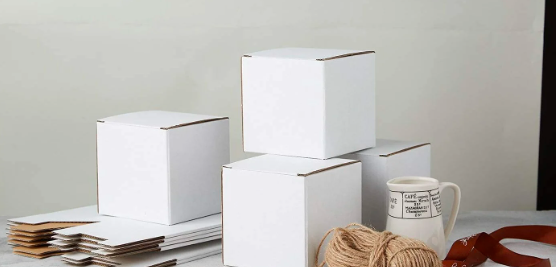
The Evolution and Versatility of Paper Box Packaging: A Sustainable Solution
In the modern world of commerce, packaging is more than just a protective layer for products—it’s an essential part of brand identity and consumer experience. Paper box packaging, in particular, has gained immense popularity for its sustainability, versatility, and ability to enhance the appeal of a product. From simple retail packaging to luxury gift boxes, paper-based packaging solutions have evolved into a sophisticated industry. This article explores the different aspects of paper box packaging, including its benefits, types, customization options, and environmental impact.
What is Paper Box Packaging?
Paper box packaging refers to containers or boxes made primarily from paper materials such as cardboard, corrugated board, or kraft paper. These boxes serve a wide range of purposes, including storage, protection, and marketing. Paper-based packaging has become a preferred choice for many businesses due to its affordability, eco-friendliness, and ability to be easily customized.
A Brief History of Paper Packaging
The use of paper for packaging dates back centuries. Early forms of paper packaging were simple wrappers, but over time, technological advancements in paper manufacturing allowed for the development of more robust materials such as cardboard and corrugated board. Today, paper box packaging is used across various industries, from food and beverage to cosmetics and electronics.
The Benefits of Paper Box Packaging
The growing demand for paper box packaging is fueled by the numerous advantages it offers over other types of packaging materials, such as plastic or metal. Here are some key benefits:
1. Sustainability
One of the primary reasons businesses are increasingly opting for paper box packaging
is its sustainability. Paper is a renewable resource, and many paper packaging materials are recyclable and biodegradable. As concerns about plastic pollution continue to rise, consumers and companies alike are seeking eco-friendly alternatives, and paper packaging fits that need perfectly.
2. Cost-Effective
Paper box packaging is generally more affordable than other materials like metal or plastic, making it an attractive option for businesses, especially those that require packaging in bulk. Additionally, advances in paper manufacturing technology have made it possible to produce strong and durable boxes at lower costs.
3. Versatility in Design
Paper box packaging is highly versatile when it comes to design and customization. Whether you need simple packaging for retail items or elaborately designed gift boxes, paper packaging can be tailored to fit your specific needs. It can be printed with high-quality graphics, embossed, or even adorned with ribbons and inserts to enhance the unboxing experience.
4. Lightweight and Easy to Handle
Paper boxes are lightweight compared to other materials like wood or metal, which makes them easier to transport and handle. This can result in lower shipping costs and more efficient storage, especially for businesses that need to ship large quantities of products.
3. Finishing Options
The finishing touches on paper box packaging can make a significant impact on the overall look and feel:
- Matte Finish: Provides a smooth, non-reflective surface that adds a touch of elegance.
- Glossy Finish: Adds a shiny, reflective surface that makes colors pop and draws attention.
- Embossing/Debossing: Creates raised or recessed designs for a tactile and sophisticated effect.
- Foil Stamping: Adds a metallic shine to logos or text, giving the packaging a luxurious touch.
- Spot UV: Highlights specific areas of the packaging, such as the brand logo, with a glossy finish, creating contrast with the matte background.
4. Custom Inserts and Compartments
Paper box packaging can also be customized with inserts or compartments to securely hold multiple products. This is especially useful for gift sets or product bundles, where the presentation of the contents is just as important as the packaging itself.
Read also: How Do Doorbell Cameras Without WiFi Work?
Applications of Paper Box Packaging
Paper box packaging is used across a wide range of industries due to its versatility and practicality. Here are some common applications:
1. Retail Packaging
Paper boxes are widely used for retail packaging, especially for products such as cosmetics, electronics, toys, and clothing. Retailers appreciate the customizability and branding opportunities that paper box packaging offers.
2. Food Packaging
From take-out boxes to snack containers, paper box packaging is a popular choice for the food and beverage industry. Paper boxes made from food-safe materials are ideal for packaging baked goods, chocolates, tea, and other edibles. Paper’s natural properties make it a great choice for eco-friendly food packaging.
3. Gift Packaging
Paper boxes are often used for gift packaging due to their ability to be customized with intricate designs, luxury finishes, and personalized touches. Rigid paper boxes, in particular, are favored for high-end gifts, such as jewelry, perfumes, and designer accessories.
4. Subscription Boxes
The subscription box industry has exploded in recent years, with companies offering everything from beauty products to snacks delivered directly to consumers’ doors. Paper boxes are the go-to choice for subscription services due to their durability, cost-effectiveness, and branding potential.
5. E-commerce Shipping
In the e-commerce industry, paper box packaging plays a crucial role in protecting products during shipping. Corrugated paper boxes are particularly popular for e-commerce shipments due to their strength and cushioning properties.
The Environmental Impact of Paper Box Packaging
As consumers become more aware of the environmental impact of packaging, there is growing demand for eco-friendly solutions. Paper box packaging offers several environmental benefits:
1. Recyclability
Most paper packaging materials, including cardboard and corrugated paper, are fully recyclable. This makes paper box packaging an eco-friendly alternative to plastic packaging, which is often difficult to recycle.
2. Biodegradability
Unlike plastic, which can take hundreds of years to decompose, paper is biodegradable. Even if paper packaging ends up in landfills, it breaks down more quickly, reducing its environmental footprint.
3. Sustainable Sourcing
Many paper products are made from sustainably sourced materials, such as recycled paper or paper from responsibly managed forests. Using sustainably sourced paper helps reduce deforestation and supports environmental conservation efforts.
Conclusion
Paper box packaging has come a long way from its humble beginnings as simple wrappers. Today, it plays a vital role in various industries, offering businesses a versatile, cost-effective, and eco-friendly solution. With endless possibilities for customization and design, paper boxes not only protect products but also serve as a powerful marketing tool. As sustainability continues to be a priority for consumers and companies alike, paper box packaging will likely remain a staple in the packaging industry for years to come.




